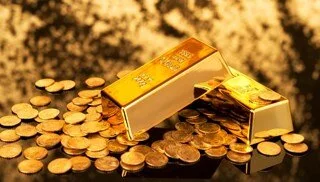Global Gold Demand Hits Record High in Third Quarter of the Year


Global gold demand surged to unprecedented levels in the third quarter of the year, signaling a robust appetite for the precious metal amid economic uncertainties and geopolitical tensions. According to the World Gold Council (WGC), the demand for gold reached a record-breaking 1,200 metric tons during this period, surpassing previous quarterly records and highlighting gold’s enduring appeal as a safe-haven asset.
Several factors contributed to this remarkable increase in gold demand. Economic volatility, driven by fluctuating stock markets and concerns over inflation, has prompted investors to seek refuge in gold, which is traditionally viewed as a hedge against economic instability. Additionally, ongoing geopolitical tensions in various regions have heightened fears of market disruptions, further driving investors towards the stability offered by gold.
Central banks worldwide have also played a significant role in bolstering gold demand. Many central banks have increased their gold reserves as part of diversification strategies to protect against currency devaluation and financial market uncertainties. The WGC reported that central banks accounted for approximately 25% of the total gold demand in the third quarter, underscoring their pivotal role in sustaining high demand levels.
Jewelry demand remained strong, particularly in emerging markets where gold is culturally significant and continues to be a symbol of wealth and prosperity. India and China, two of the largest consumers of gold jewelry, saw substantial increases in purchases, driven by festive seasons and rising disposable incomes. The WGC noted that jewelry demand contributed around 50% to the total gold demand, reflecting the metal’s enduring popularity in consumer markets.
Investment demand, encompassing physical gold bars, coins, and gold-backed exchange-traded funds (ETFs), saw significant growth as well. Investors’ confidence in gold as a long-term investment vehicle remained high, with many viewing it as a strategic addition to their portfolios amidst economic uncertainties. The inflow into gold ETFs reached a new high, indicating a strong institutional and retail interest in gold as an investment asset.
Furthermore, technological advancements and increased awareness about gold’s role in sustainable investments have also contributed to its rising demand. The metal’s use in various industries, including electronics and medical devices, has seen a modest increase, adding to the overall demand.
Market analysts predict that gold demand is likely to remain strong in the coming quarters, driven by persistent economic uncertainties and ongoing geopolitical challenges. However, they also caution that factors such as interest rate hikes and strengthening global currencies could influence future demand dynamics.
The record-breaking gold demand in the third quarter underscores the metal’s resilience and its crucial role in both investment and consumer markets. As the global economic landscape continues to evolve, gold is expected to maintain its status as a vital asset for investors and consumers alike.
Recent Posts
Ether Surpasses 2021 Record Following Powell’s Rate Cut Hints
Ether's price surged past its 2021 record after Jerome Powell's speech hinted at potential rate…
Understanding the Federal Reserve’s Impact on Retirees’ Financial Security
Explore how the Federal Reserve's policies affect retirees and the broader economy, ensuring financial stability…
Federal Reserve Chair Candidate Interviews to Begin After Labor Day
Treasury Secretary Scott Bessent confirms interviews for Federal Reserve chair candidates will start post-Labor Day,…
Walmart and Competitors Reveal Earnings Amid Rising Tariff Impact
Walmart and rivals report earnings, highlighting tariff effects on consumer prices. Insights on market trends…
Financial Challenges Facing Seniors: Navigating a Tight Budget
Explore the financial struggles seniors face on limited incomes and discover strategies for effective budgeting…
U.S. Stock Futures Rise Ahead of Fed Meeting After Trump-Putin Summit
U.S. stock futures see slight gains following the Trump-Putin summit as investors prepare for the…